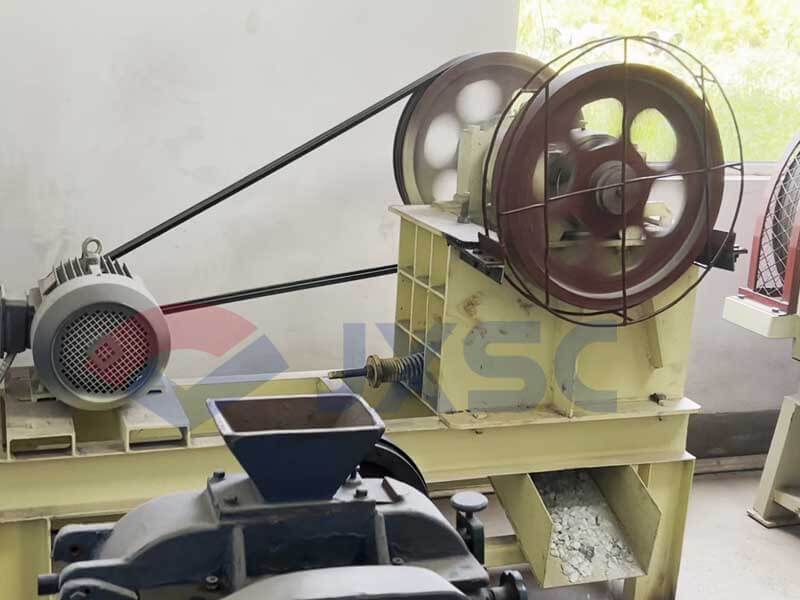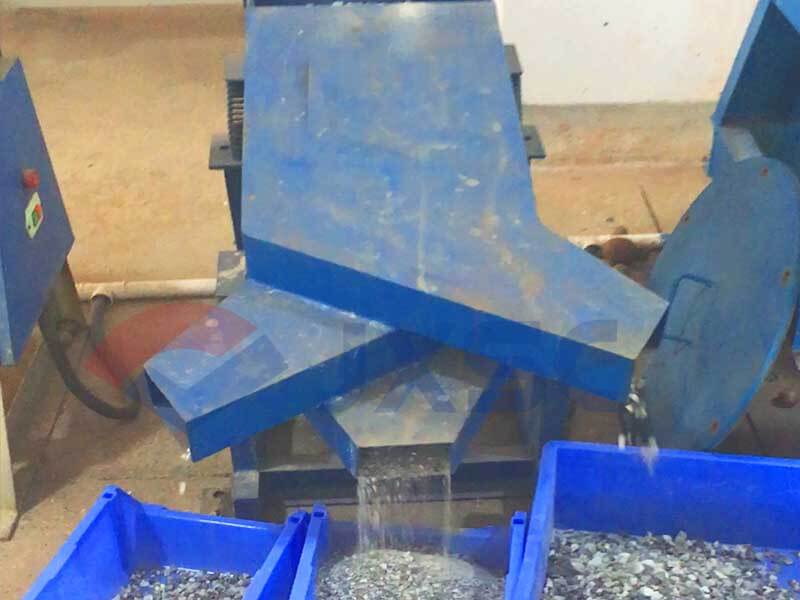In the manufacturing industry, fluorite (fluorspar) is an essential raw material in the production of aluminum, gasoline, and uranium fuel. It is able to reduce the melting point of raw materials, thereby increasing the efficiency of metal smelting processes. In addition, fluorspar acts as a flux in the glassmaking process, ensuring the transparency and strength of the finished product. Fluorite ore is an important industrial mineral used in a variety of applications such as metallurgy, ceramics, and chemicals. Among them, strict crushing and screening tests are required to maximize its value. By accurately analyzing the quality and purity of fluorite, its beneficiation process can be optimized to ensure the production of high-quality products, thereby improving efficiency and reducing waste.
What Is fluorite
Fluorite, also known as fluorspar, is an important mineral for extracting fluorine. Fluorite comes in many colors and can also be transparent and colorless. Its crystal structure has significant cleavage properties and can be easily separated along specific planes. Its well-defined cleavage makes it excellent in industrial applications; it is often used as a flux in metallurgy to lower the melting point during metal production.
Fluorite has a Mohs hardness scale of 4, making it relatively soft compared to other minerals such as quartz or diamond, but strong enough to be used as an abrasive in polishing and etching applications. This is crucial in mineral processing, as separating valuable ore from gangue minerals simplifies the extraction process.
Lab Fluorite Ore Crushing and Screening Test
Fluorite ore crushing test
Fluorite (Fluorspar) ore crushing trials are an important analytical procedure that reveals the mechanical properties of the ore and optimizes processing results. In this test, the sample is systematically broken down to evaluate its response to various crushing techniques. As the ore is subjected to successive stages of impact and compression, operators collect valuable data on the fragmentation pattern and size distribution. More innovative equipment such as laboratory jaws, hammer crushers or high-pressure grinding rollers and other crushing equipment, there are often used to reduce the size of the material with high efficiency. The main purpose is to conduct a series of preliminary crushability assessments, and to evaluate parameters such as fracture toughness and compressive strength.

Fluorite ore screening test
After the crushing trial, fluorite ore creening test is performed using a vibrating screen to classify the particles according to size. Often, the aspect of optimizing the screen size is often overlooked; choosing the right size can improve the efficiency of fluorite ore separation. This carefully designed method begins with a comprehensive assessment of the ore’s particle size distribution, allowing operators to determine the most effective screening mesh size. By utilizing advanced technologies such as vibrating screens and circular screeners, companies can effectively separate high-grade fluorspar from impurities such as quartz and calcite. Each test not only reveals valuable data about the material, but also paves the way for more refined processing strategies.

Laboratory fluorite ore crushing and screening test provide valuable insights into the efficiency and effectiveness of various methods of processing this important mineral. Careful selection of crushing technology and screening parameters can significantly improve the recovery rate and overall quality of fluorspar concentrate. Additionally, the test provides critical data that can inform future large-scale fluorspar mine beneficiation operations, ensuring efficient resource utilization and cost-effectiveness. Asia-Africa International(JXSC) can customized its mineral processing test service and equipment to maximize concentrate recovery based on particle size distribution and release characteristics. Contact us for more details!
